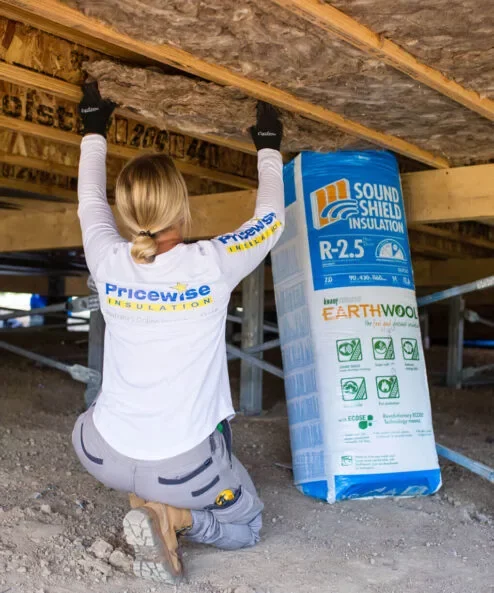Insulation Tips
When does underfloor insulation need to be replaced?
Firstly, you could be losing as much as 20% of your heating and cooling energy through an uninsulated floor. If you don’t already have insulation installed in your underfloor area, it is a worthwhile investment that can pay itself off in a few years. If you are living in an older home, we recommend checking your underfloor insulation to ensure it is in good condition. Otherwise, you may be missing out on the full benefits that underfloor insulation can give you.
Should I remove my existing underfloor insulation?
We recommend checking your insulation every 10 years to ensure there is no visible damage that is compromising its performance. If you have recently moved into a home with existing insulation it is best to check it at the earliest convenience. When checking your underfloor insulation, you will need to look for the following; rigid and clean insulation, sagging, gaps, moisture or water damage to the insulation and any exposed electrical cables near the insulation. If your insulation shows any signs of damage, we recommend investigating further and getting the help of a professional to determine whether the insulation needs to be removed or not.
What R-value should I install?
The R-value is an indication of the thermal resistance and performance of the insulation product. So, the higher the R-value the greater the thermal performance. We recommend installing a minimum of R2.0 in the underfloor area of your home. Just remember that installing a higher R-value will increase your insulation’s effectiveness and performance.
Choosing the right underfloor insulation for you
There are a variety of underfloor insulation products designed to suite your homes needs. Although all underfloor insulation works in the same way, these products may differ in material type, such as glasswool, polyester, and rockwool. As well as the product form for example; batts, rolls and blown-in insulation. The most common underfloor insulation products are; Knauf Earthwool underfloor batts, Greenstuf Polyester underfloor roll and CSR Bradford Optimo.
DIY project OR professional install
If you are a handy man or woman, then you may want to consider DIY underfloor insulation install, otherwise get in contact with a professional installer who can assist you. Things to remember before installing your own insulation is safety first! Don’t forget to wear protective gear such as long sleeves, gloves and safety glasses, and more importantly don’t forget to turn off the power before entering your underfloor area. Ensure you have everything ready before you start insulating to minimize delays once you begin. If you are unsure of the quantity of insulation to purchase simply measure the length and width of the area and multiply together to get the square meter coverage of your underfloor. Avoid gaps, and do not compress bulk insulation as this can compromise the performance of the insulation. Allow an appropriate clearance around appliances and electrical fitting, by cutting the insulation with a Stanley knife.











